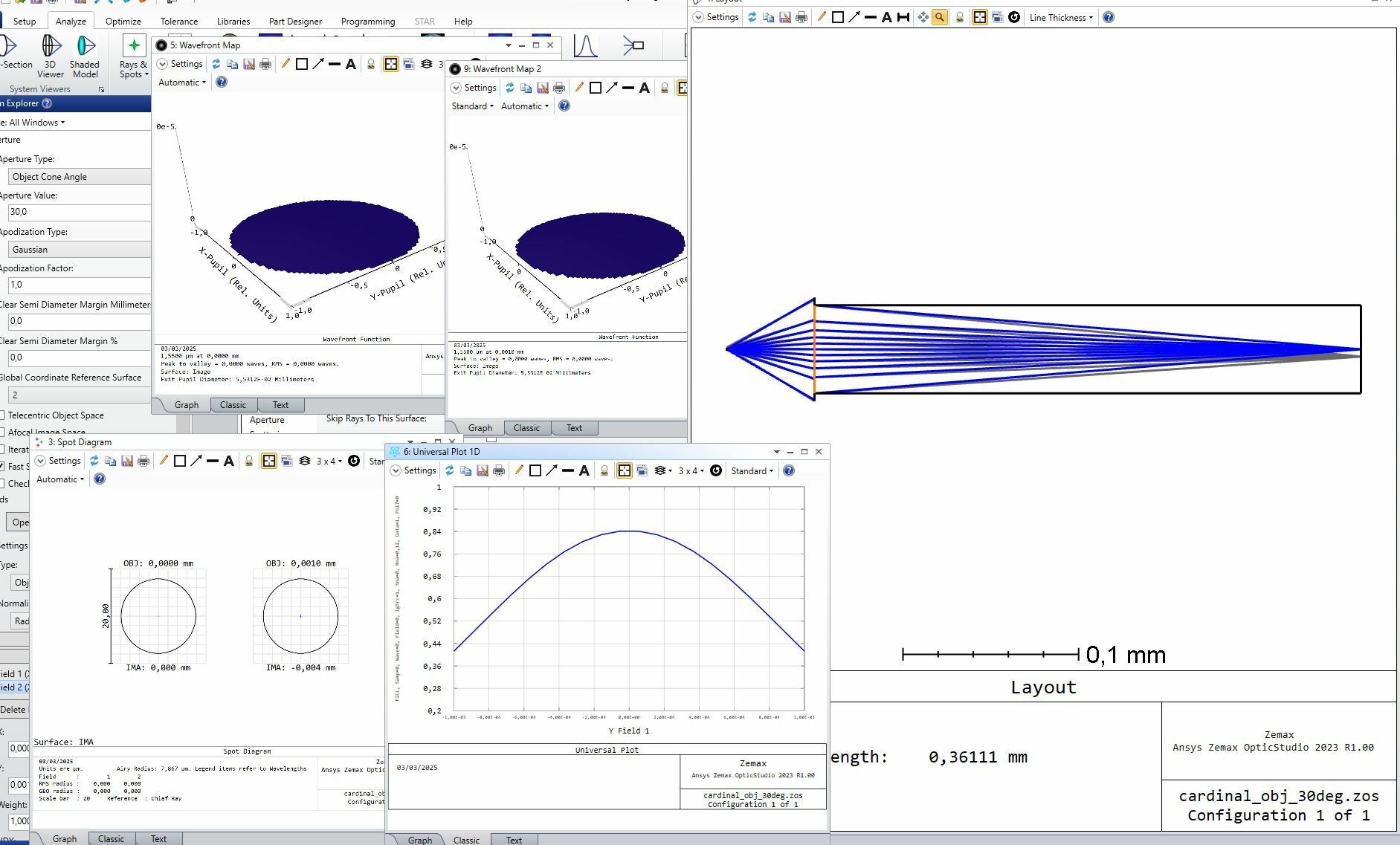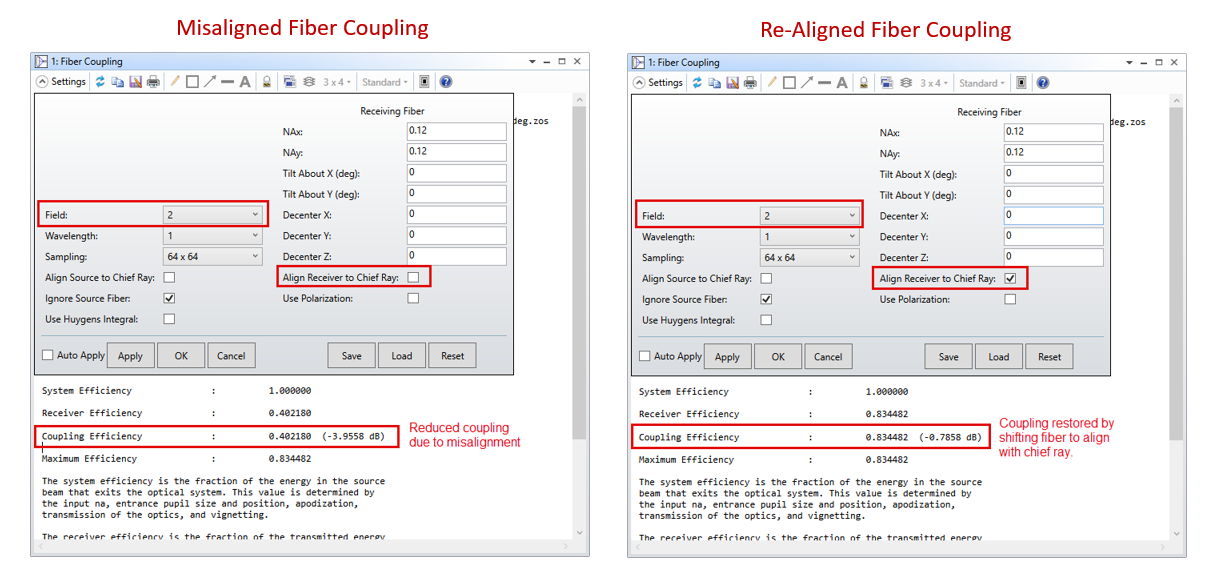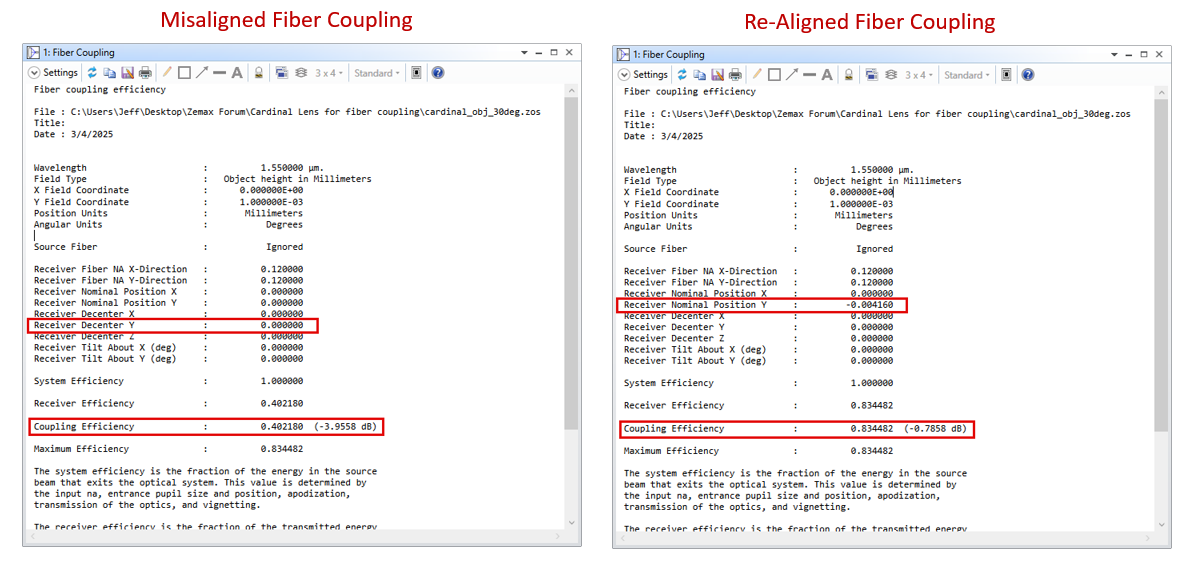Hello there friends from the Zemax community,
I have been using a bit the Cardinal lens DLL file to model a perfect imaging lens which images an on axis point at an optimal paraxial magnification value.
After reading the paper in where the Cardinal lens model is presented: https://opg.optica.org/ao/fulltext.cfm?uri=ao-63-4-1110&id=546054, I set up my system using similar settings to what is described in the section: Finite conjugate imaging from the paper.
Following what is described in that section, I observe that the optimal paraxial magnification value is equal to the ratio of the object space NA to the image space NA.
In my case, my on-axis point is defined in air with an object cone angle of 30 degrees. The image space NA is equal to the NA of a single mode fiber operating at 1.55 microns. (NA=0.12) (At the end I want to model the coupling of light from a point into a SMF)
With this I obtain the paraxial magnification value that I need, and I optimize the system while using the Cardinal lens’s EFL as variable and by setting my merit function for spot minimization and the found paraxial magnification value as additional target.
I can get then then results that I want for the on axis point (in terms of the PSF at the image space and the paraxial magnification value)
Then, once I include an off-axis point (using object height) with an offset of 1 micron, I also obtain a stigmatic image of this point at the image plane, i.e, free of spherical and coma aberration.
All of this works as intended based on the characteristics of the Cardinal lens.
However, I see that by setting the paraxial magnification in this form, my off axis object point is mapped to an image point which is too far from the center of the optical axis (again, I am interested in evaluating the fiber coupling efficiency).
In this case, even if the off axis image point is stigmatic my overlap value has decreased from a value of 86% to 40% for a small object offset of just 1 micron. Obviously this is not what I want.
Having explained all of this, I wonder if it is possible to decouple the image space height (or magnification in this case?) from the image space NA? From the paper I understand that these two things are related to each other and I dont know if this is a necessary condition for having aplanatic imaging?
Here is an screenshot for the system I am modeling here:

As you might observe, for both field points the performance is diffraction limited and as expected stigmatic. However, from the lower right curve shown there, you can observe how the results from the FCIL operator decrease down to 40% for an object height offset of 1 micron (again, even though the imaging is stigmatic).
Hi
Any feedback or comment will be welcomed.





